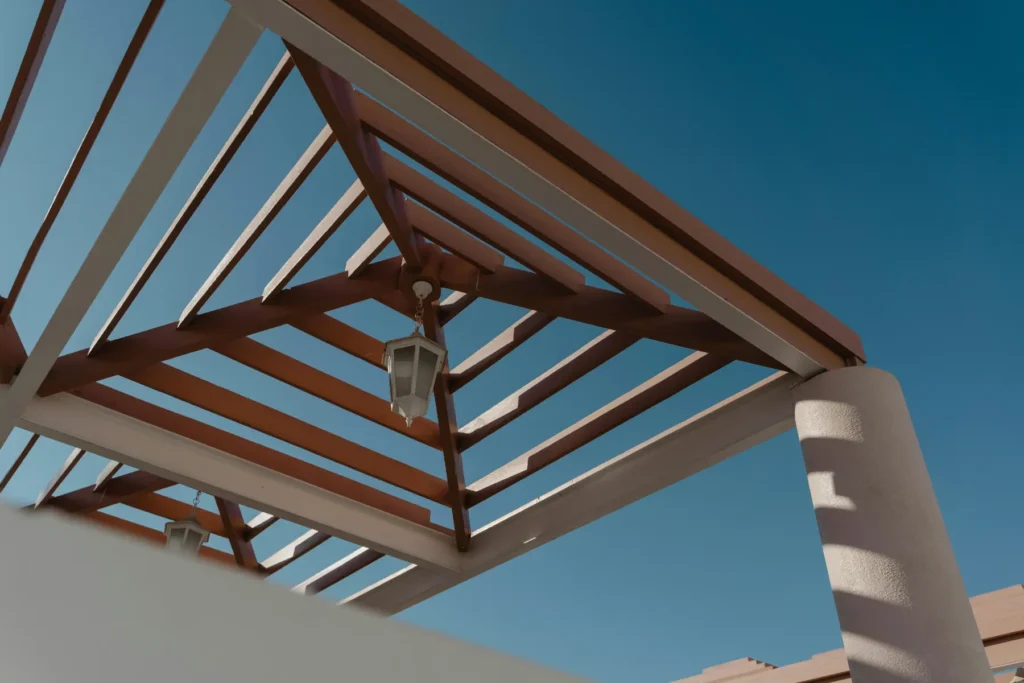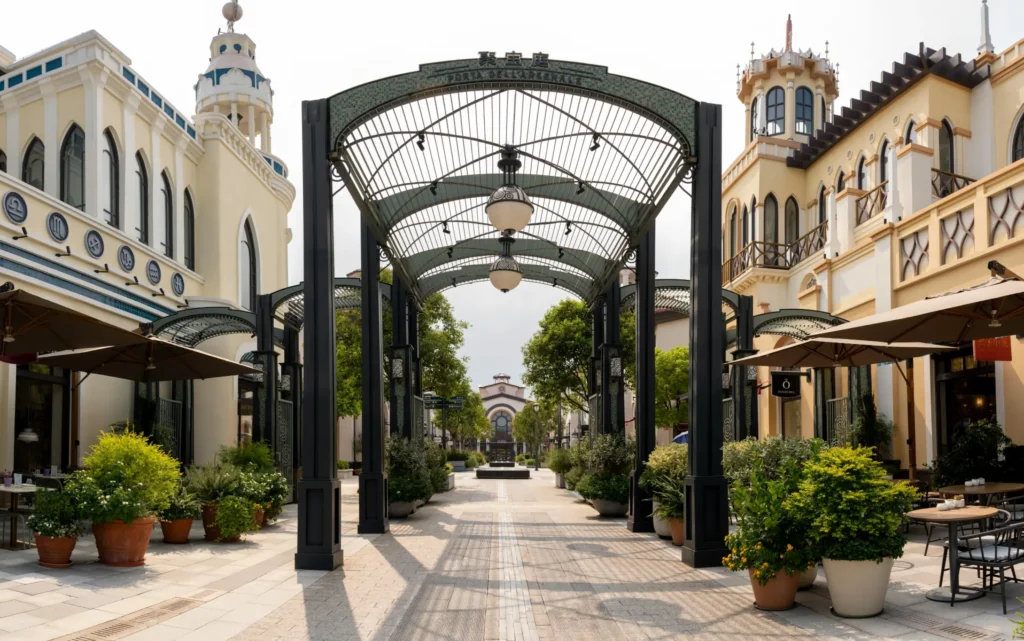
Canopies in Dubai: Steel Pergola Design Calculations
Introduction
With Dubai’s booming real estate and landscaping trends, steel pergolas and canopies—especially Canopies in Dubai —have become a key feature in residential and commercial properties. However, installing these structures isn’t just an aesthetic choice—they require compliant structural design calculations to secure approvals from authorities like Dubai Municipality (DM), NAKHEEL, Trakhees, and DDA.
This guide breaks down the technical aspects, approval requirements, and how professional structural calculations can save time and cost for contractors, consultants, and villa owners.
Table of Contents
Why Structural Calculations Are Mandatory in Dubai
Steel pergolas and canopies may seem lightweight, but they are classified as temporary or semi-permanent structures — which means:
- Authorities require structural safety checks
- Wind loads in Dubai’s coastal environment can be extreme
- Unapproved installations can lead to fines or forced removal
Whether you’re dealing with EMAAR, NAKHEEL, Trakhees, or Dubai Municipality, a proper structural submission typically includes:
- Load calculations
- Connection details
- Structural framing layout
- Foundation/base plate design
- Design compliance report (AISC, ASCE, BS, or local code)
Key Design Parameters for Steel Pergolas and Canopies
1. Material Grade and Section Selection
- Common Steel Grades in Dubai:
- S275, S355 (EN standards)
- ASTM A36, A500 Grade B (US codes)
- Aluminum Alternative: 6061-T6 (lightweight, corrosion-resistant)
- Common Sections Used:
- RHS, SHS, CHS tubes
- I-beams or C-channels for primary members
- Flat bars or plates for bracing or purlins
👉 Tip: Hollow sections (e.g., RHS) offer better aesthetics and strength-to-weight ratio for pergolas.
2. Design Loads Considered
a. Dead Loads
- Self-weight of steel members
- Cladding (wood, polycarbonate, fabric, glass)
b. Live Loads
- Access loads (if accessible)
- Maintenance load (usually 0.25 kN/m² per Dubai standards)
c. Wind Loads
Wind load is the most critical factor in Dubai.
- Basic wind speed in Dubai: ~45 m/s
- Use ASCE 7-16 or BS EN 1991-1-4 for wind pressure calculations.
- Consider suction and uplift on canopies.
Example Calculation:
Uplift Wind Load = 0.613 × V² × GCp × Kz
Where:
V = 45 m/s
GCp = external pressure coefficient
Kz = exposure factor
3. Load Combinations
Typical ULS combinations as per ASD/LRFD (AISC):
- 1.2 DL + 1.6 WL
- 0.9 DL + 1.6 WL (for uplift)
Allowable Stress Design (ASD) is still used for many Dubai submissions, particularly with Trakhees.
4. Connection Design
- Welded or bolted joints must follow AISC or BS 5950.
- Bolts: Minimum M12, Grade 8.8 recommended
- Uplift anchor bolts must be designed for pullout and shear
- Use Hilti PROFIS software for base plate anchoring verification (commonly requested by Dubai authorities)
5. Foundation or Base Plate Design
- For freestanding pergolas, you may need concrete pads sized for overturning and uplift
- Use pedestal bases with steel plates and anchor bolts
- If anchored to an existing slab, verify slab thickness and reinforcement (usually via core cutting or as-built drawing)

Structural Calculations Required by Dubai Authorities
| Authority | Required Documents | Notes |
| Dubai Municipality (DM) | Structural calculations, load assumptions, drawings | Required for residential villas, especially G+1 |
| Trakhees | Full structural report with signed drawings | Mandatory for any modification in free zones |
| NAKHEEL | NOC with structural drawings and stamped calculations | Must submit via Nakheel eServices |
| DDA (Dubai Development Authority) | Structural design with wind load check | Required for TECOM/creative clusters |
Case Study: Steel Canopy for Nakheel Villa
Client Request: Freestanding steel canopy 5 m x 4 m with polycarbonate top
Structural Challenges:
- Open sides, high wind uplift
- Anchoring to existing concrete slab
Calculation Results:
- Steel: RHS 100x100x5 mm
- Wind Load: 2.3 kN/m² uplift
- Base plate: 200x200x10 mm with 4 M16 bolts
- Concrete pedestal: 400x400x500 mm below slab
Outcome: Approved by Nakheel within 7 days. No revisions required.
Software Commonly Used for Structural Calculations
- STAAD.Pro – 3D frame modeling and analysis
- SAP2000 or ETABS – Useful for complex trusses
- AutoCAD – Structural detail drafting
- Excel-based load sheets – Fast for pergolas
- Hilti PROFIS – Anchor bolt design
Structural Solutions uses licensed STAAD.Pro and AutoCAD software and submits stamped reports per authority requirements.

How Structural Solutions Can Help
At Structural Solutions, we specialize in:
- Fast turnaround for pergola/canopy calculations
- DM/NAKHEEL/DDA/Trakhees submission-ready documents
- Freelance or one-time packages with clear pricing
- Site verification and slab anchoring checks
- Value engineering to reduce steel tonnage without compromising safety
FAQ
Q: Can I build a steel pergola without approval?
A: No. All structural modifications in Dubai require approval from the relevant authority.
Q: How long does it take to prepare structural calculations?
A: Typically 2–4 working days, including authority-compliant drawings and load checks.
Q: Can you assist if I already installed the structure without prior approval?
A: Yes. We offer as-built calculations and post-installation assessments for retroactive approvals.
Conclusion
Whether you’re a contractor installing pergolas in EMAAR villas, a designer working in DDA zones, or a villa owner enhancing your backyard — getting structural calculations right is essential for both safety and approval. Steel pergolas and canopies might look simple, but they must withstand Dubai’s harsh wind conditions and rigorous compliance checks.
Let Structural Solutions handle the technical side — from calculations to approvals — so you can focus on the aesthetics and execution.


👍🏻👍🏻